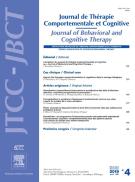Intérêt et limite des appareils de biofeedback dans un environnement bruyant - 06/04/13
 , Auguste Morille, Isabelle Grangereau, Véronique Dubreil, Noëlle Zendrera
, Auguste Morille, Isabelle Grangereau, Véronique Dubreil, Noëlle Zendrera| pages | 7 |
| Iconographies | 2 |
| Vidéos | 0 |
| Autres | 0 |
Résumé |
Ce travail analyse deux paramètres psychophysiologiques associés aux émotions, en considérant l’écart entre la réalité du terrain et la maîtrise des situations expérimentales. En prenant comme indices la variabilité de la fréquence cardiaque (VFC) et l’activité électrodermale (RED), une expérience est réalisée en considérant les périodes de la journée et un environnement bruyant. Une nouvelle méthodologie est proposée, et les résultats obtenus montrent des différences de réactivité à des épreuves émotionnelles chez des sujets présentant des variations du cycle du sommeil.
Le texte complet de cet article est disponible en PDF.Summary |
Introduction |
Health, work and sports medicine psychology sometimes use measuring tools to quantify physiological responses and the adaptation of the individual to environmental demands. However, these studies are difficult and there is often a gap between “natural” observations and the experiment. This work suggests a simplified methodology using two types of biofeedback equipment adapted to semi-natural situations. The experiment consisted of analyzing the regulation of emotional reactions in a group of students in a noisy environment (laughter, exclamations, etc.) and focuses on daily fluctuations.
Method |
The participants (81 psychology students aged from 19 to 22) were tested either in the morning or afternoon. The students were invited to handle two biofeedback devices for heart rate variability (HRC) and electrodermal response (EDR). These devices, designed for practical psychophysiological work, consisted of a sensor, an analogue/digital converter and software. The HRC test identified cardiac coherence following breathing exercises, differentiating the students’ responses into two groups: “chaos” group and “coherence” group. The EDR test measured the emotional response of the participants to the word “pretty” while listening to a group of words, indicating whether EDR was zero, low or high. After the session, each participant provided information indicating whether they were “morning” (“early birds” group) or “evening” (“night owls” group).
Results |
Comparisons between participants tested in the morning or afternoon indicated a significant difference during the cardiac coherence test (Chi2=6.08; P<0.02). In addition, according to the two periods of the day and typologies (“early bird” or “night owls”), there was a significant difference in the “chaos” group (Fisher’s exact test, P=0.02). With regard to the electrodermal activity, there was also a significant difference between participants tested in the morning or the afternoon. (Chi2=5.49, P<0.02). There was a divergence between the emotional results and the cardiac coherence groups (Chi2=8.74; P<0.01). This difference was especially noticeable when the test was taken in the morning: “high” EDR was more frequent in the “chaos” group, while “zero” EDR could be observed in the “coherence” group (Chi2=12.59; P<0.002). Finally, comparing the two periods of the day and the number of participants producing “strong” EDR, we saw a significant difference between the “night owls”, “indifferent” and “early birds” (Fisher’s exact test: P=0.02).
Discussion |
Despite the simplification of the material and procedure, the results obtained were interesting as they confirmed that daily rhythms have an influence on the emotions and concentration of young students. The association between emotion, cardiac coherence training and the spontaneous activity of sudoriferous glands seems to be physiologically dependent on circadian rhythms. There are currently numerous studies concerning chronobiology or chronotypes, but rhythmic classifications should not generalized as the student population is not representative of the general population. Certain students are more dependent on periods of the day and “respond” more to emotional stimulations, regardless of the defined chronotype. However, many students claim to be “evening” people and the results showed that these rhythmic modifications affect their attention levels and their capacity to concentrate, for example when they are tested in the morning. In conclusion, we can use this simplified methodology to explore biological rhythms in several areas (clinical, ergonomic, prophylactic) using larger sample groups and suggesting further traits such as impulsivity, tobacco consumption, etc.
Le texte complet de cet article est disponible en PDF.Mots clés : Biofeedback, Cohérence cardiaque, Activité électrodermale, Typologie circadienne, Bruits de fond
Keywords : Biofeedback, Cardiac coherence, Electrodermal activity, Circadian typology, Background noise
Plan
Vol 23 - N° 1
P. 17-23 - mars 2013 Retour au numéroBienvenue sur EM-consulte, la référence des professionnels de santé.
L’accès au texte intégral de cet article nécessite un abonnement.
Bienvenue sur EM-consulte, la référence des professionnels de santé.
L’achat d’article à l’unité est indisponible à l’heure actuelle.
Déjà abonné à cette revue ?

